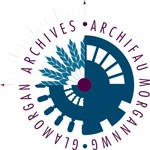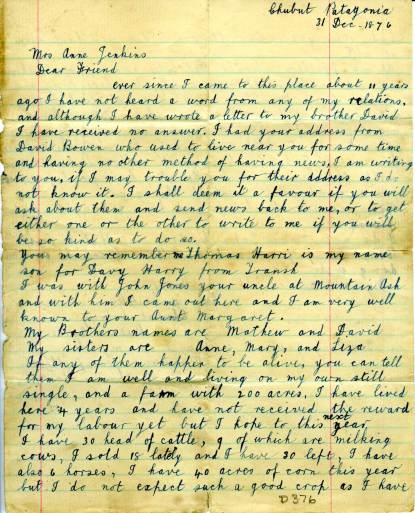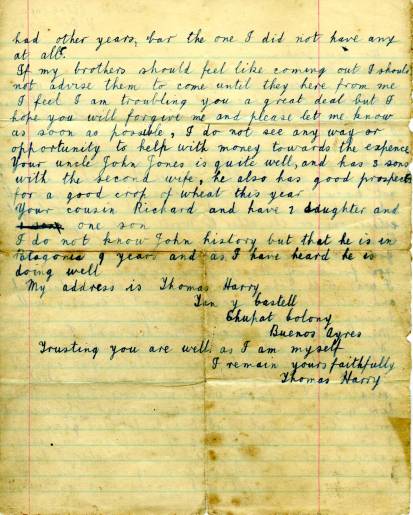A guest blog by Elen Phillips – Principal Curator: Contemporary & Community History at St Fagans National History Museum. With her colleague, Sioned Williams, she is currently researching the history of St Fagans Castle during the First World War for a book to be published later this year.
Over 3,000 auxiliary hospitals opened in Britain during the First World War. Staffed for the most part by volunteers, they provided nursing care to soldiers with non-life threatening injuries. Forty-nine of these temporary medical facilities opened in Glamorgan, with the accommodation ranging from workmen’s institutes to stately homes.
In March 1916, the Red Cross opened an auxiliary hospital in a banqueting hall in the grounds of St Fagans Castle – the site of the present-day National History Museum. During the First World War, the Castle was home to the Earl and Countess of Plymouth. Along with the Bute family of Cardiff Castle, the Plymouths were the most prominent landowners in the area.
As Lord Lieutenant of Glamorgan, the Earl played an active role in drumming up support for the war effort in south-east Wales. In September 1914, he came to national prominence as chair of the influential Welsh Army Corps committee, tasked with delivering Lloyd George’s vision for a ‘Welsh Army in the field’.
While her husband focused on military affairs, the Countess of Plymouth devoted much of her time to charitable causes. During the war, she was President of the Glamorgan Branch of the Red Cross and, in the years leading-up to 1914, hosted several meetings and fundraising activities in support of the movement. At one such meeting at St Fagans Castle in November 1909, the first Voluntary Aid Detachment (VAD) unit in Wales was formed – a move which would subsequently ease the recruitment of volunteer nurses for the St Fagans Red Cross Hospital.
The VAD scheme was launched in 1909 by the Red Cross and the Order of St John, under the auspices of the War Office, to provide supplementary nursing services in the event of war. Detachments (or units) were organised at county level, with each volunteer member receiving tuition in first aid and basic nursing skills. In 1910, about 200 VAD members from Glamorgan gathered at St Fagans Castle for a training day. A reporter from the Cardiff Times witnessed the action:
An interesting demonstration was given in a field, showing how the wounded can be carried to the rear for treatment at hospital bases. Dr Sparrow explaining how first aid can be given without special provision of splints, bandages etc. A feature of the demonstration was a spring cart, lent by James Howells and Co Cardiff, which in less than seven minutes can be improvised for twenty-four wounded soldiers under cover. Cardiff Times, 24 September 1910.
Many of the nurses who volunteered at the St Fagans Red Cross Hospital from March 1916 until it closed in March 1919 joined the VAD scheme at this early stage. One of whom was Mary Ann Dodd – known as Polly to her colleagues. She worked as a housemaid for the Plymouth family, but also did turns of duty at the hospital, as she recalled some 40 years later in an essay now archived at the Museum:
I was trained as one of her Ladyship’s VADs and very proud she was of us. I wore a cap and a white apron with a red cross on it… The Banqueting Hall was given over to 40 soldiers; the War went on, so a room was added for 30 more men… I used to cook and clean and one day a week I did the washing. Those soldiers’ socks were in a state, many had no heels in them at all. The soldiers only laughed and teased us, and when they got better, they tried to help us. NMW, MS 1293.

Soldiers and VAD nurses in the Italian Garden, St Fagans Castle, 1916 (NMW, DF003643)
Apart from Mary Ann Dodd’s recollections and three photographs of convalescing soldiers in their hospital blue pyjamas, the Museum’s archive collection lacks primary sources directly associated with the hospital. In addition, very few traces of the building remain on-site. The Banqueting Hall is long gone – a fire in the 1950s razed the pavilion-like structure to the ground – and private homes now occupy the land where the hospital once stood. In our quest to piece together its hidden history, my colleague Sioned Williams and I have been reliant on evidence preserved at other institutions, in particular the Plymouth Estate records at Glamorgan Archives.
The Plymouth Estate records include the only known plans of the hospital in existence. The first plan was probably drawn in haste in preparation for its opening in March 1916 (GA, DPL/X/0). This clearly shows the adaptation of the Banqueting Hall into a medical facility, complete with a matron’s room and dispensary. The second plan corroborates Mary Ann Dodd’s recollections as it shows a proposed 30 bed extension to the existing 40 bed ward (GA, DPL/X/30).

Plan of the hospital, about March 1916 (GA, DPL/X/30)

Plan showing extension to the hospital, 1917 (GA, DPL/X/30)
Although Mary Ann Dodd failed to mention a date for the extension, evidence from the Plymouth Estate Cash Book 1914-17 at Glamorgan Archives (GA, DPL/977/1) suggest that these alterations were made in early 1917. On 27 March 1917, the Cash Book lists a payment to Humphreys Ltd in respect of addition to VAD Hospital St Fagans £82.8.0. The ever-useful Welsh Newspapers Online website yields over 180 references to this Knightsbridge-based contractor – mostly advertisements such as this one from the County Observer, 19 April 1902:
HUMPHREYS’ ISOLATION HOSPITALS and SANATORIUMS, complete with administrative blocks, on view. Delivery from stock. Skilled workmen. Addresses of 500 districts where our hospitals have been erected during past 20 years.
The 1914-17 Cash Book also gives a flavour of the homely atmosphere in the hospital. In June 1916, payments were made for a new piano and repairs to a gramophone – presumably to keep the convalescing soldiers entertained. The same Cash Book also highlights a number of charitable donations made by the Earl and Countess of Plymouth. These include £13.19.2 to Marshall & Snelgrove Ltd for socks & gloves for men from St Fagans District who have enlisted; £2.5.3 to A. McLay & Co for cardboard boxes for packing presents to recruits and £12.4.5 to Hobson & Sons for Red Cross uniforms.
Charitable donations are also noted in the 1917-19 Cash Book (GA, DPL/977/2), although payments for hospital fixtures and fittings appear less frequent in this document. In early 1919, the Estate made several payments to charities supporting demobilised soldiers and to memorial funds. These included contributions to the late Col. Bruce Vaughan’s Peace Memorial Fund and to a victory carnival in aid of demobilised soldiers. Interestingly, both Cash Books contain payments on behalf of the hospital to the Plymouth Arms Hotel – the village public house. Although alcohol was discouraged during the war, the temptation was evidently too much for some!
The story of the St Fagans Red Cross Hospital features prominently in the Museum’s First World War centenary programme. In many ways, the Castle can be read as a microcosm of Wales at war. Here we have a site-specific story which mirrors the fate of wider society. Some of the most enduring cultural shifts witnessed during the First World War – such as the employment of women and mass voluntary action – are reflected in the wartime experiences of St Fagans Castle and its people. Thanks in part to the collections carefully preserved at Glamorgan Archives, this hidden history will no longer be lost in the landscape.
Elen Phillips; Principal Curator: Contemporary & Community History, St Fagans National History Museum









